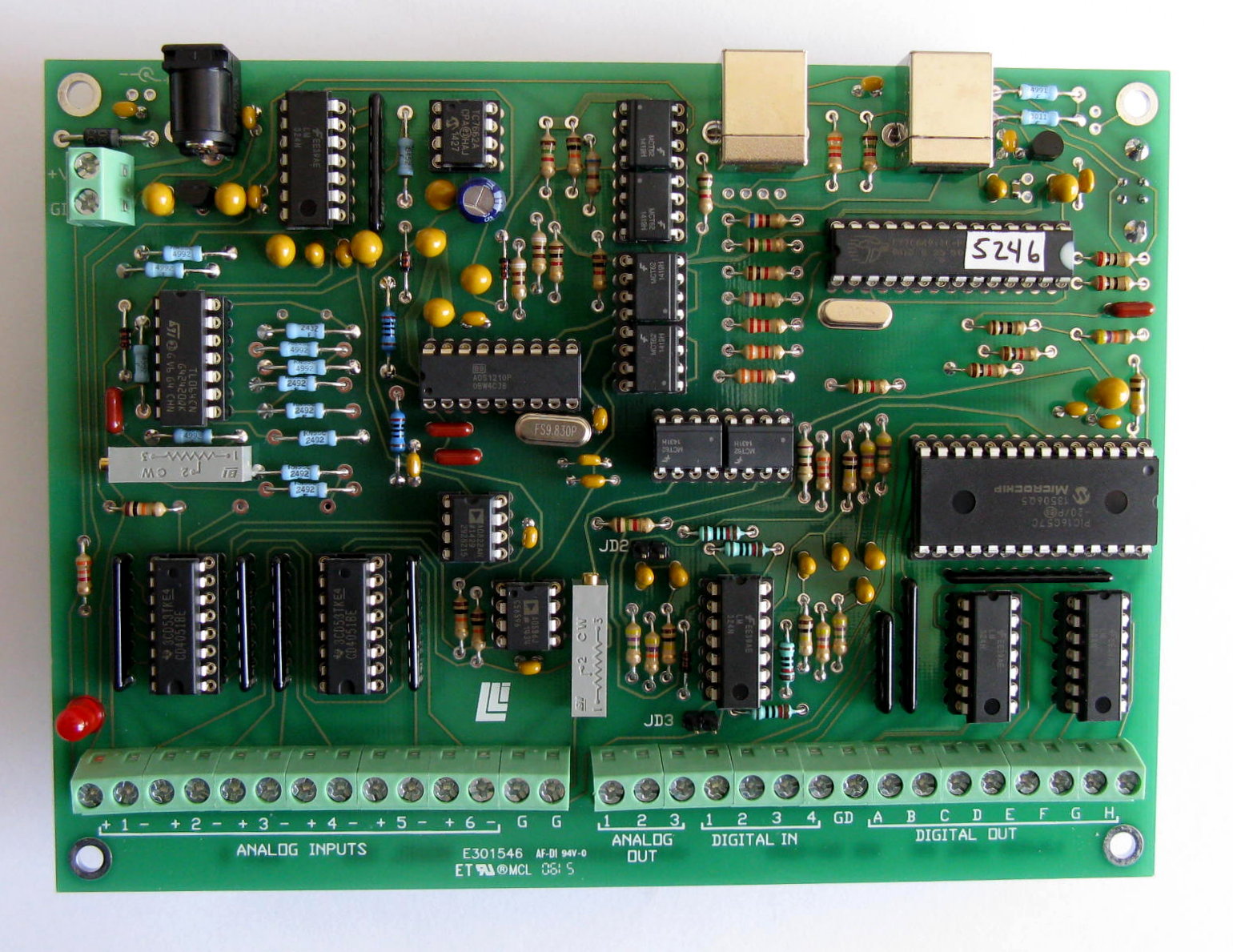The Lawson Labs, Inc. Model 302 24-Bit Data Acquisition System is a high-resolution device for translating voltages
into digital form. The Model 302 communicates with a host computer using USB (Universal Serial Bus). It has six
multiplexed differential analog input channels, three analog outputs, four digital inputs and eight digital output lines.
All the input/output circuitry is optically isolated from the computer.
The Model 302 is intended for DC and low frequency applications. The data rate is programmable from 50 to
1000 samples/second. At a data rate of 50 samples/second, the RMS noise approaches one count, providing nearly 23 bits
effective resolution. The converter is guaranteed monotonic to 23 bits. Effective resolution decreases with increasing
data rates. Even so, over 20 bits of effective resolution are maintained at 500 samples/second.
The Model 302 requires a single DC supply in the range of 15 to 30 volts to power the isolated circuitry. With the
preregulator removed (a factory option), the range is 9 to 15 VDC. Current draw is typically 30 milliamps in normal operation. The
power and analog inputs are protected against substantial overvoltages.
Both polled and scanning modes are available. In scanning mode, the Model 302 maintains its own time base and transmits
a pre-defined scan of one to eight input channels at a preset interval. The last two channels are for gain and offset
correction. Self-calibration can remove drift errors under software control.
The exceptional resolution, stability, flexibility and price are achieved by combining an accurate, but complex,
delta-sigma type A/D converter with a microcontroller supervisor. The microcontroller simplifies the task of
interfacing to the converter itself.
back to table of contents
|
|


